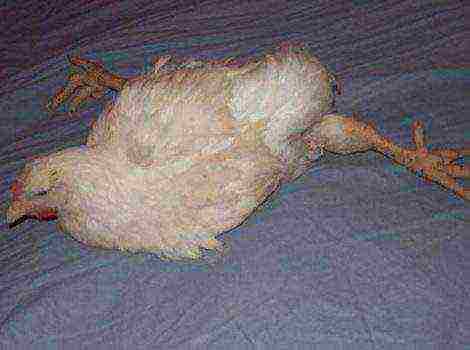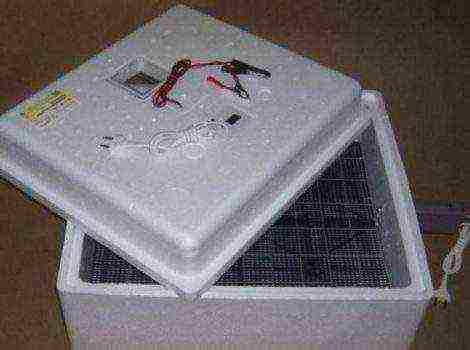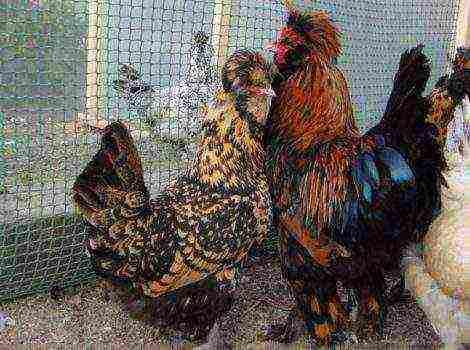Content
Incubation of chicken eggs
Incubation of chicken eggs is an interesting and quite responsible occupation. When starting an artificial incubation, it is important to check the operation of all devices and make sure that they are in full serviceability, otherwise there is a risk of the death of the entire hatch. In addition to equipment and desire, it is important to take into account some more nuances, but first things first ...
Incubator
Basically incubator - this is a box made of polystyrene (or an analogue - expanded polystyrene), of different sizes, consisting of a base and a lid. Its main functions are to maintain the set temperature and humidity in the chamber; some models are additionally equipped with an automatic egg turning function, which makes it possible not to depend on hens, which, after incubation, stop laying eggs.
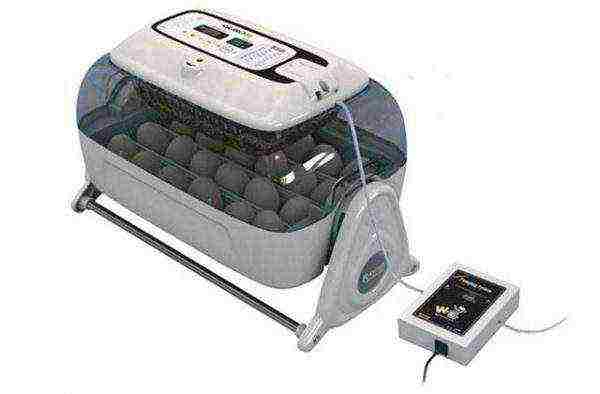
Thermostats and elements that heat the air are located in the lid of the incubator, and water tanksproviding the necessary moisture from below. The eggs lie closer to the bottom.
Egg flip
Egg turning is an important necessity, it is carried out:
- manual way (the cheapest category of incubators, the main disadvantage is that you have to open the lid to turn the eggs, and this leads to temperature jumps)
- mechanical (it is necessary to pull the wire and move the grate on which the eggs lie, they will roll and thereby turn over)
- automatic (the whole process takes place automatically with the help of an electric motor)
Heating element
The heating element is installed in the cover (top).
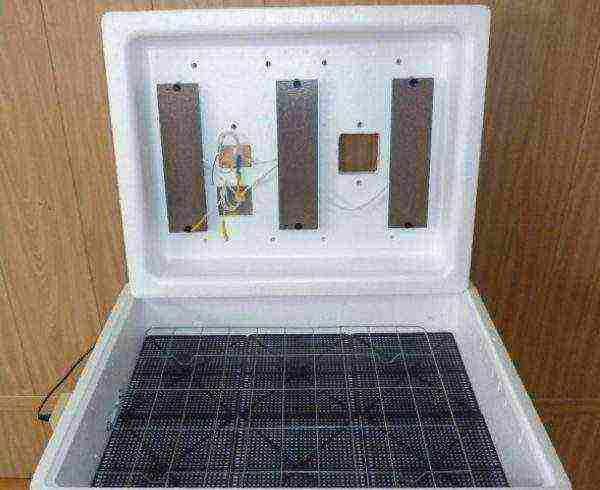
Russian manufacturers have released two types of network-powered models 220V and combined option 220V + 12V, this is a variation of a conventional system, additionally equipped with adapters for connecting to an alternative power source (for example, a battery). The good thing about this innovation is that the backup power supply starts up automatically when the main power supply fails.
Measuring instruments
Incubation is classified as a complex technological process, where compliance with the temperature regime and the correct air humidity play a key role.
Some manufacturers equip sold incubators thermometers and hygrometers... Someone only with thermometers, and for some models you will have to buy separately a temperature meter and a humidity meter.
Dimensions (edit)
Depending on the volume of the laid eggs, you can consider household incubators (loading up to 150 eggs) and industrial (the number of eggs per tab is actually unlimited).
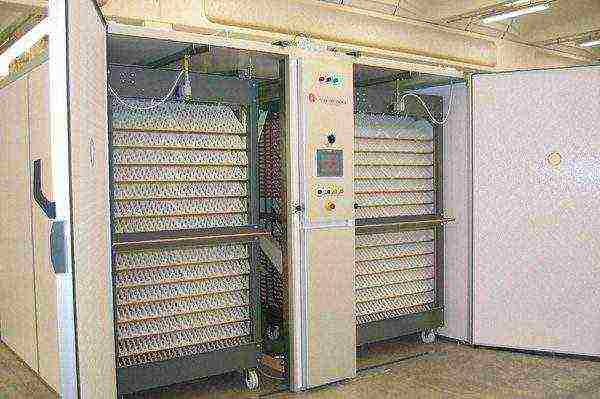
Eggs
The process of hatching chicks begins already with collection and storage of eggs... Not all domestic eggs are suitable for incubation, if the goal is to get healthy, strong offspring capable of further full-fledged living, then you need to incubate, considering the following nuances:
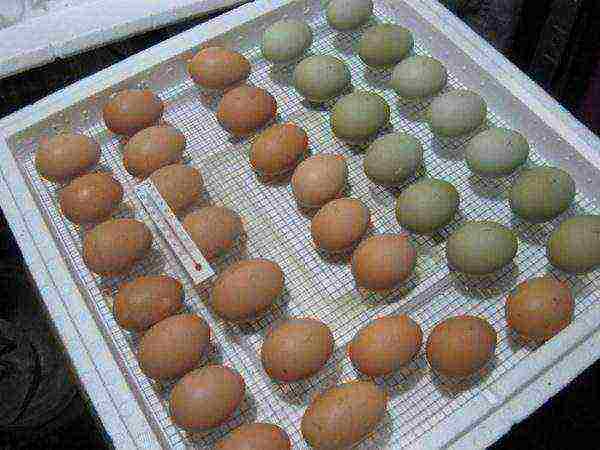
- The hen house should have roosterthe higher the cock sits in the hen house, the stronger the feeling of dominance
- The more actively he tramples the chickens, the more likely 100% brood
- Not worth using small eggs - chicks will be small and weak
- It is preferable to choose medium eggs and preferably about one size
- Cracked eggs, dents, pimples, outgrowths are immediately discarded for food, an incorrect egg shape will not allow the embryo to develop as it should
- Eggs are not allowed wash or rub, for cleaning, you need to wipe with a cloth (for example, a rag) soaked in a solution of potassium permanganate or hydrogen peroxide, such a simple manipulation will allow you to both clean and disinfect them
- Optimal time for laying eggs - this is from 2 to 7 days, freshness can be determined by the air chamber, the more it is, the older the egg, the older the eggs, the more they will lag behind in development
- Recommended store eggs blunt end up
- To prevent yolk sticking to the shell turn the eggs every three days,
- If it turns out during transillumination that the yolk cord broke (the yolk moves sharply inside the shell when the egg is turned), then such a sample should also be discarded
- Storage temperature not lower than 10 and not more than 18 degrees Celsius, the longer the eggs intended for setting in the incubator are stored, the lower the temperature
- Humidity during storage eggs intended for incubation no more than 80%
- If used incubator without automatic egg turning function, it is convenient to mark the top and bottom, in order not to get confused (you can use a simple pencil, unlike felt-tip pens and markers, it is not liquid and will not be able to seep through the shell to the embryo)
Humidity
The humidity in the incubator is maintained by evaporation of water from containers placed on the bottom, the hygrometer indicators must be monitored and, if necessary, the evaporation must be adjusted.
The water level should be checked approximately every three days.
On a note:
- to accelerate evaporation and thereby quickly raise the humidity values, you can lower the cloth into a container with water
- You can slow down evaporation and lower moisture readings by reducing the evaporation area, for example, by placing a piece of foam plastic in a container with water.
Temperature
Not recommended turn on the incubator for warming up before laying the eggs, otherwise the temperature drop may adversely affect the brood.
Temperature required for incubation should be adjusted according to the table temperature regimes (table below)
It is recommended to control the temperature with several thermometerssince sometimes they lie a little, and in this case, every degree affects the result.
Ovoscope
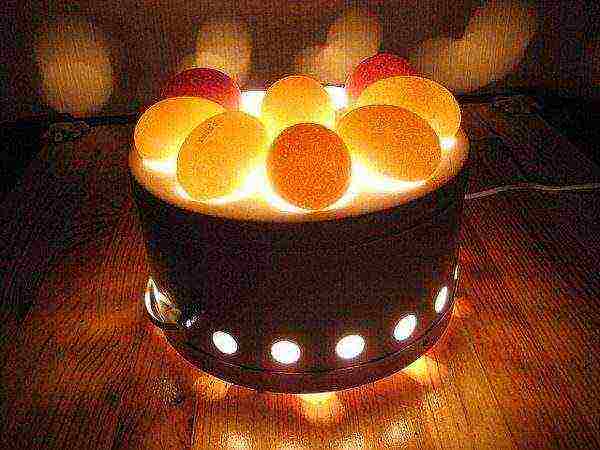
The ovoscope helps you identify suitable eggs even before setting them in the incubator. Translucent egg you should attach it to the ovoscope with a blunt end. Major defects are detected by this particular device. Translucence of eggs is carried out for the first time on 7-8 day (after the first viewing, eggs that are not fertilized or have any other defects can be removed from the incubator), the second time on 12-13 day, can be enlightened on Day 18.
Laying eggs
Practice has shown that laying eggs it is more convenient to spend in the evening. First, the eggs must be taken out of a cool room to a warmer one to warm to room temperature. Then lay in the incubator
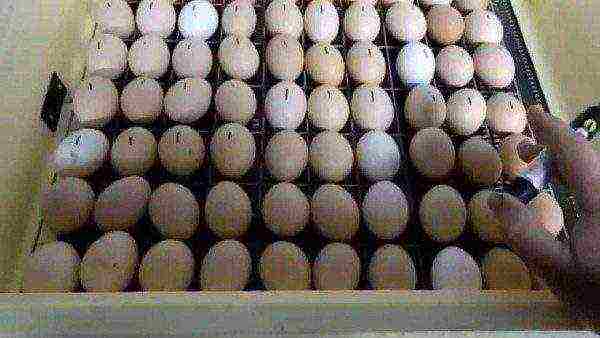
Incubation periods
Temperature mode table
| Incubation period | Days | Temperature | Humidity | Turn | Airing |
| 1 | 1-7 | 37.8-38.0 ° C | 55-60% | 4-8 times a day | — |
| 2 | 8-14 | 37.8-38.0 ° C | 50% | 4-8 times a day | — |
| 3 | 15-18 | 37.8-38.0 ° C | 45% | 4-8 times a day | 2 times a day for 10-15 minutes |
| 4 | 19-21 | 37.5-37.7 ° C | 70% | — | — |
Total 4 incubation periods:
- 1-7 days - the day of the bookmark is considered the first, it is set temperature 37.8-38.0 degrees and humidity 60%. There is no need to change the indicators for the first week, the embryo is just forming, it is important to provide a stable, comfortable environment, it is only necessary to turn the eggs over to prevent the chicks from sticking to the shell.
During ovoscopy, at the end of the first period, a well-developed circulatory system and the germ plasma in which the embryo is located should be visible, it is not yet visible. At this stage, you can remove extra eggs (not fertilized or damaged)
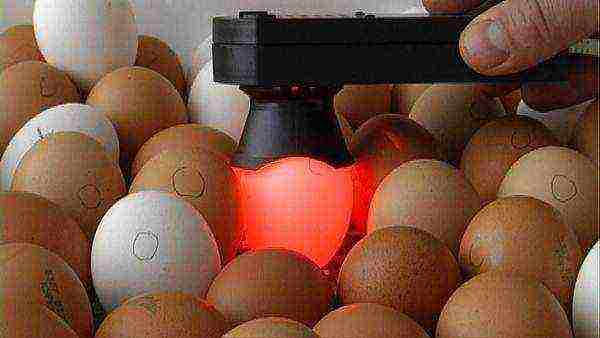
- 8-14 days - the next 4 days you need to reduce the humidity, and continue to turn the eggs. During this period, especially for the future chick humidity is importantsince lack of water can destroy the embryo. During this period, the allantois (embryonic respiratory organ) is located in the sharp part of the egg and should already be closed.
- 15-18 starting from the second week you need to start ventilate the incubator a couple of times a day, thereby temporarily lowering the temperature, not forgetting to turn the eggs. Air starts metabolism and increases gas exchange. The ovoscope during this period will show the space inside densely filled with the embryo, only the air chamber will remain hollow.
During this period, you can already hear squeak coming from the egg... The chick tries to stretch its neck towards the blunt end of the egg and break the air chamber, after which it reaches the shell.
- 19-21 about 19 days after laying, the temperature in the incubator should be reduced up to 37.5-37.7 and increase the humidity to 70%. In recent days, the remains of the protein, yolk are used and a slight biting begins. Temperature goes down, humidity goes up distance between eggs should be as possible as possible and during this period they do not need to be turned over, in general, it is better not to touch the eggs. It is important to ensure good air circulationbut not a draft.
On day 21 chicks should hatch, the chick turns counterclockwise and hatches through the shell. Healthy chick will break the shell in about three strokes and the pieces of the shell will be large. Having positioned his head at the blunt end, and his neck at the sharp end, he rests his weight on the walls of the shell, and, bending, breaks it. You need to let them dry on their own and after that place them in a warm, dry place.

Signs of a Healthy Chicken:
- Fit stomach
- Soft umbilical cord
- Powerful legs
- Brilliant fluff
- Active
- Reacts to the sounds
- Clear eyesslightly convex
- Short beak
How many chickens you can raise depends only on you. Mortality of young animals, as a rule, a consequence of either incorrectly selected eggs, or errors in the incubation regime. You cannot completely trust the technique when raising poultry, no one is immune from technical failures. Monitor the work even the most automated incubator needs at least every 8 hours.
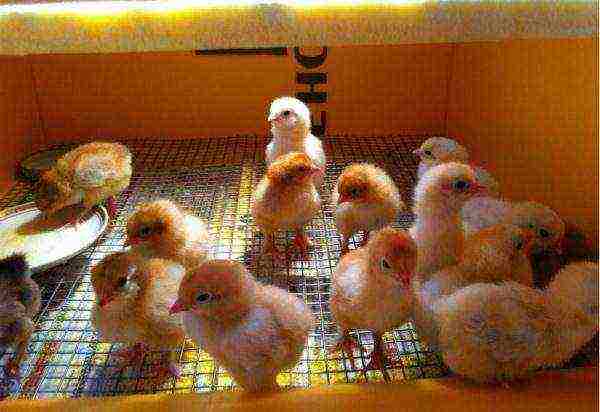
Also important disinfect and incubator after use, and before a new bookmark.
If you adhere to these simple rules, then small yellow lumps, whether they are broilers or a simple breed, will please you more than once with their appearance.
